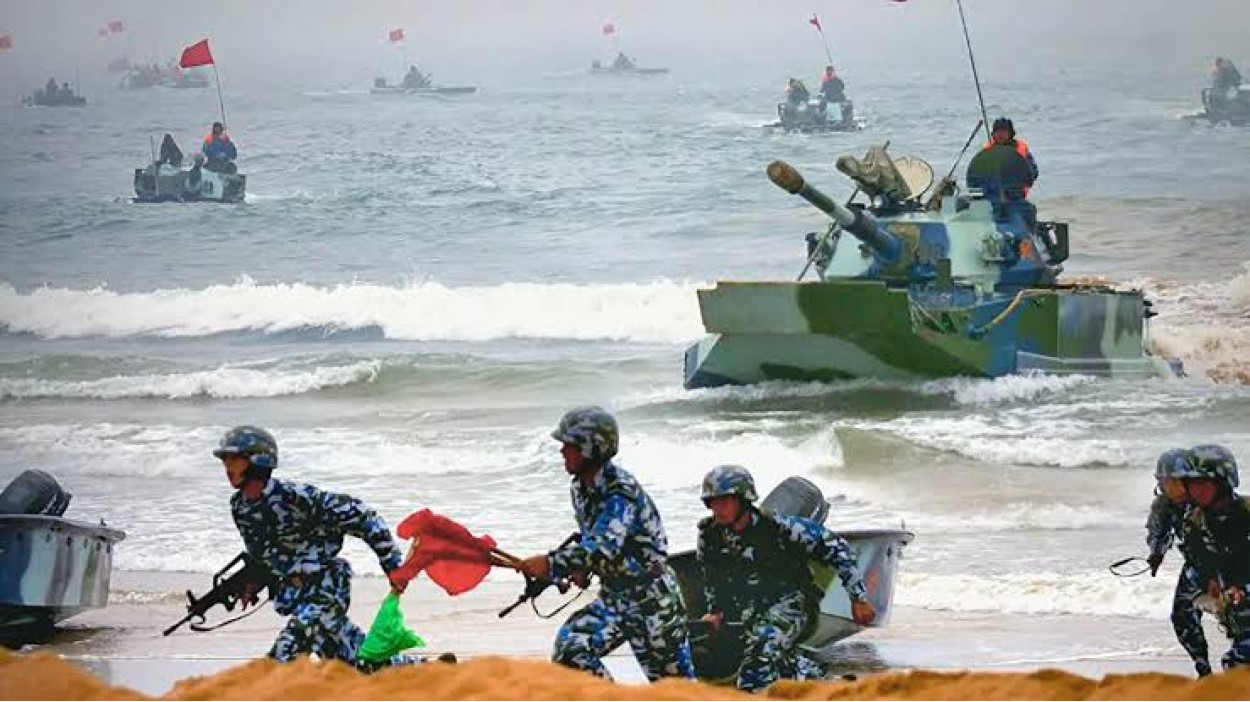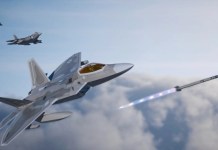A US military expert has suggested building artificial reefs to thwart a Chinese amphibious landing on Taiwanese beaches and complicate its naval surface and underwater operations near its shores.
The cheap and durable structures have also been pointed to have other economic and ecological benefits in promoting tourism and attracting and preserving marine life.
The concept presents a terrifying scenario for Chinese vessels running aground in the middle of heavy sea fighting, drawing Chinese resources to release them. This slows down the tempo of its operations and presents the Taiwanese defenders with several options to harass the attackers.
Meanwhile, US Defense Secretary Lloyd Austin said that Washington will provide “significant” military aid to Taiwan aimed at deterring China.
Austin said he was pleased that “the United States will soon provide significant additional security assistance to Taiwan through (the) presidential drawdown authority (PDA) that Congress authorized last year.”
Washington could use the PDA to arm Taiwan just like it has been arming Ukraine.
Exotic Structures That Are Deadly Obstacles
According to Scott Savitz, a senior engineer at the RAND Corporation, artificial reefs would impede China’s primary tool to “rapidly move vast quantities of personnel and equipment across a 100 mile Strait and onto the island” with “seaborne” forces. Aerial transport cannot lift military hardware and infrastructure’s incredibly heavy mass and volume.
Taiwan has only a few potential landing sites, like beaches and the required water depth to support an amphibious assault and landing craft. Thus non-explosive physical barriers can be as effective as naval mines, explosive aerial and maritime drones, and gun and rocket artillery in stalling an incoming naval armada.

“Ships and/or landing craft” operating in the waters “would run aground or even impale themselves on the artificial reefs,” becoming “stationary targets,” Savitz wrote in a column for Real Clear Defense.
“They would also clutter a crowded operating area, impeding the movements of other ships and landing craft. Anticipating this damage and disruption, China would be less tempted to attempt an amphibious assault,” he added.
He pointed to famous incidents of ships running aground and becoming immobilized in peacetime. The risk, therefore, is higher, and chances of rescue and repair are even more complicated during the war.
In 2013, the USS Guardian had to be dismantled after it ran aground on a Philippine reef. This was followed by the 2015 incident of a US Military Sealift Command vessel stuck on a reef near Okinawa for over a week.
In the past year, two large cargo ships have run aground on reefs – one in Jordanian waters in September 2022 and another east of Belize in March 2023.
Moreover, if China attempts to bombard the reefs, it can cause chunks of the structure to break off and pose hazards elsewhere. This is not to mention committing the extra ammunition and resources that could be used elsewhere, especially in the opening days of a conflict.
Reefs Only One Part Of The Problem
Artificial reefs will be a massive irritant and time-consuming obstacle for Chinese naval or amphibious operations closer to Taiwanese shores. But the solution addresses only a part of Taiwan’s military defensive issues, as an amphibious landing would not be the only tool China would be employing.

Degrading the Republic of China Navy (RoCN) and RoC Air Force through aerial, land-based, and naval missilery, hitting ground-based targets like ammunition dumps, command and control centers, and air defense radars would parallelly be conducted during a Taiwan operation.
It wouldn’t be an overstatement to say that the PLA would achieve these roles largely easily, given their overwhelming lead in numbers, technology, logistics, and training.
Hundreds of vessels, both civilian maritime and naval warships, would encircle Taiwan along with land-based fighter-bombers like the J-11, J-16, J-10, J-20, Su-30 MKK, Su-35, and H-6K missile-carrying strategic bombers and jets including the J-15 from aircraft carriers like the Liaoning and Shandong.
They will be supported by reconnaissance-strike and ISR drones like the TB-001, BZK-005, and CH-7 giving continuous targeting data on Taiwanese ground and naval targets. With no strategic depth to retreat into, the island will eventually lose its military hardware, assuming no political settlement is reached and the war extends.
Amphibious landing is, therefore, just one element of a Chinese attack on Taiwan, and even if it is thwarted, the loss of the rest of its military will be sufficient to provide a fait accompli to the island’s leadership and citizenry.
Moreover, the reefs would only work on larger amphibious landing craft and Unmanned Underwater Vessels (UUV) nest beaches but not prevent small squads of marine special operation frogmen from gaining access to the island from one of Taiwan’s several rocky shores.
These special forces can undertake various roles – from hitting key command centers and air defense radars or secretly providing precise targeting data to Chinese bombers and warships.
In other words, it would make no sense for just one area of Taiwanese military defense (preventing a Chinese amphibious landing) to succeed while the rest of its military structure collapses.
External Support Risks Chinese Wrath
Pushing back and comprehensively defeating any Chinese military move will require Taiwan to destroy its naval and air force to preserve its ground forces long enough for American or Japanese military assistance to arrive.
Instead, external military support coming in later would even hasten the process of the Taiwanese military being overwhelmed. Being present alongside the RoC military with capital weapons like aircraft carriers and warships in the Taiwan Strait can only offer a credible chance of beating back a Chinese attack.
But having a permanent presence in the Straits is fraught with its own political risks as that might provoke and not deter the Chinese from attacking since it might perceive an imminent threat to its reunification goal.
- The author can be reached at satamp@gmail.com
- Follow EurAsian Times on Google News




